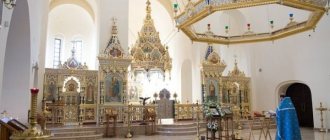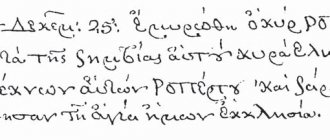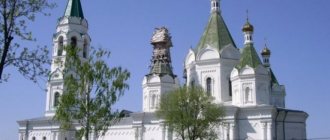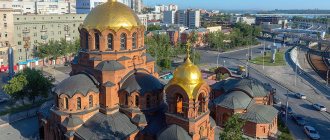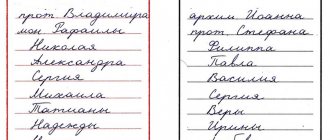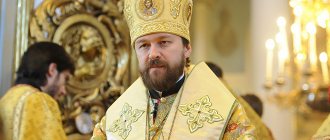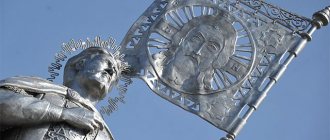From the history
They learned about the Christian religion on the territory of Bulgaria in the 1st century AD. e. A disciple of Paul, one of the apostles, arrived in Varna. His name was Amplius, and he founded the first episcopal see in the country. From then on, Christian churches began to appear, and artists began to paint icons. In the 4th century, a meeting of bishops was held in the capital Sofia in order to strengthen harmony between the churches of the West and the East. The spread of Christianity throughout the state began only in the 9th century. Tsar Boris I decided that the country should be baptized, and this happened.
Now in the capital you can see temples of different religions and denominations in close proximity to each other. Not many religious buildings from the Middle Ages have survived to this day. Among them is the temple of St. Paraskeva-Petka of Tarnovskaya, dating back to the 13th century. And the famous monument - the Cathedral of St. Alexander Nevsky - was built only in 1908.
Spiritual education in the Bulgarian Orthodox Church
There are two theological seminaries here - in Sofia and in Plovdiv. In these institutions, as everyone knows, priests are trained - future church shepherds and exemplary Christians. However, it is not only in these educational institutions that spiritual disciplines can be mastered.
Some universities in Bulgaria have theological faculties, where you can also receive spiritual education. Such institutions are the Sofia University of St. Clement of Ohrid, the oldest university in the state, as well as the Veliko Tarnovo University named after Saints Cyril and Methodius.
We recommend reading: Essay on the topic of the first snow Discussion about love for a person The main characters of “Fahrenheit 451”
Islam
During the Turkish conquests, local residents were forced to convert to Islam, which became another religion of Bulgaria. Many Muslims moved to the country from other states. Gradually the number of adherents of this religion increased. Roma, Greeks, and some Bulgarians adopted Islam in order to save families from having to pay taxes to the Turks.
In the 18th-19th centuries, the number of Muslims among the country's inhabitants began to decline. Many left the country. Only isolated settlements of Muslims remained in the southeastern part of the country. These are mainly Gypsies, Turks, Pomaks (as Islamized Bulgarians are called), there are also some other nationalities: Arabs, Bosnians. There are several mosques throughout the country. The main one is located in the capital, in the same place as the Cathedral of St. Alexander Nevsky. The Banya Bashi Mosque was built in the 16th century and is one of the oldest in all of Europe. The unique historical monument is made of brick and stone and has many turrets, columns, arches, and an elegant minaret. The mosque was built by Sinan, a famous engineer during the Ottoman Empire.
Saints and shrines
In the Bulgarian Church they are especially revered: Saint Prince Boris - the baptizer of the Bulgarian people; the holy Equal-to-the-Apostles brothers Cyril (+ 869) and Methodius (+ 885) - the creators of Slavic writing, who translated the books of Holy Scripture and liturgical books into the Slavic language; Saint Clement of Ohrid (+ 916) - one of the disciples of the holy brothers; Patriarch of Tarnovo Saint Euthymius (XIV century), whose ministry was aimed at the spiritual growth of the Church and strengthening the country; the abbot of the Hilendar monastery, the Monk Paisius (+ 1798) and the bishop of Vratsa, Saint Sophronius (+ 1813), glorified in 1964. The founder of one of the most famous monasteries, St. John of Rila (+ 946), is revered as the heavenly patron of Bulgaria.
Judaism
Jews have long been found on the territory of the Republic of Bulgaria. The Jewish people lived in Thrace during the Roman Empire. This is evidenced by the ruins of synagogues found by archaeologists in some provincial cities and towns. Especially massive resettlement of Jews to the Bulgarian kingdom began in the 7th century. The people who suffered persecution in Byzantium were looking for quieter places to live. The Sultan of the Ottoman Empire promised certain rights to the Jews, hoping that they would help enrich the state. At that time, three large Jewish communities emerged: Ashkenazi, Sephardic and Romanite. Over time, the rights of Jews became equal to the rights of ordinary Bulgarian citizens. They served in the army and took part in wars.
After World War II, Jews began to move en masse to Israel. More than 40 thousand people left. Today, the number of adherents of Judaism is only one hundredth of a percent. At the same time, synagogues have been preserved in many cities in Bulgaria; only two are functioning. The majestic Sofia Synagogue was opened in 1909.
This unusual architectural structure was built in the Moorish Revival style. The rich interiors are decorated with a heavy chandelier weighing 1.7 tons. The building is located in the central part of the city. The second synagogue in Bulgaria can be seen in Plovdiv.
Primates
[6]
Archbishops
Patriarchs
- Damian (927 - after 971)
- Herman (late 10th century)
- Philip (late 10th century - early 11th century)
- David (1016 - 1018)
- John (1018 - 1019)
- see further Archbishops of Ohrid
Archbishops of Tarnovo
- Basil I (1186/87 - after 1230)
- Vissarion
Patriarchs of Tarnovo
- St. Joachim I (1235 -1246)
- Vasily II (1246 - ?)
- Joachim II (c. 1265)
- Ignatius (before 1273 - after 1277)
- Shchmch. Macarius
- Joachim III (1280s - 1300)
- Dorofei
- Novel
- Theodosius I (c. 1337)
- Ioannikios I
- Simeon (c. 1346)
- Theodosius II (c. 1348 - c. 1360)
- Joannicius II (c. early 1360s - c. 1375)
- St. Euthymius (1375 -1393)
Exarchs of Bulgaria
- Hilarion (Ivanov) (February 12-16, 1872)
- Anfim (Chalykov) (February 16, 1872 - June 17, 1877)
- Joseph (Yovchev) (April 24, 1877 - June 20, 1915)
- Parfeniy (Ivanov) (1915 - June 20, 1918) Metropolitan. Sofia, Viceroy-Chairman of the Holy Synod
- Vasily (Mikhailov) (June 1918 - October 1921) Metropolitan. Dorostolo-Chervensky, Viceroy-Chairman of the Holy Synod
- Maxim (Pelov) (October 22, 1921 - March 28, 1928) Metropolitan. Plovdivsky, Viceroy-Chairman of the Holy Synod
- Kliment (Shivachev) (March 28, 1928 - May 3, 1930) Metropolitan. Vrachansky, Vice-Chairman of the Holy Synod
- Neophyte (Karaabov) (May 4, 1930 - October 15, 1944) Metropolitan. Vidinsky, Viceroy-Chairman of the Holy Synod
- Stefan (Shokov) (October 16, 1944 - January 21, 1945) Metropolitan. Sofia, Viceroy-Chairman of the Holy Synod
- Mikhail (Chavdarov) (November 8, 1948 - January 4, 1949) Metropolitan. Dorostolo-Chervensky, Viceroy-Chairman of the Holy Synod
- Paisiy (Ankov) (January 4, 1949 - January 3, 1951) Metropolitan. Vrachansky, Vice-Chairman of the Holy Synod
Bulgarian Patriarchs
- Kirill (Konstantinov) (January 3, 1951 - May 10, 1953) Metropolitan. Plovdivsky, Viceroy-Chairman of the Holy Synod
- Maxim (Minkov) (March 13 - July 4, 1971) Metropolitan. Lovechsky, Viceroy-Chairman of the Holy Synod
- Kirill (Kovachev) (November 10, 2012 - February 24, 2013) Metropolitan. Varnensky, Viceroy-Chairman of the Holy Synod
Historical titles of the primate
- Patriarch of Bulgaria, Metropolitan of Sofia (from May 8, 1953 - mentioned 2013)
Christianity in Bulgaria
The Christian religion in the country is represented by three directions. In addition to Orthodox people, there are also adherents of Protestantism (just over one percent) and Catholicism (0.8 percent). The Church does not depend on the power of the state and other church organizations. The spread of the Catholic faith began in the 14th century.
Unlike the current situation, under the communist regime, religious people experienced severe censure and attacks from the authorities. It was forbidden to publish or have religious literature at home. This situation lasted until the 70s.
Gradually, the attitude towards religion in Bulgaria became tolerant. By the end of the last century, a huge number of sectarian movements and communities appeared. Now, despite the fact that the majority of the population considers themselves Christians, people have become less religious, attend church less often, and practically do not observe religious customs and fasts. The head of the Bulgarian Orthodox Church is the Patriarch; the Synod of Metropolitans participates in making some important decisions.
Notes[ | ]
- V. F. Khulap Reform of the calendar and Easter: history and modernity.
- ↑ 1 2 Metropolitan Hilarion (Alfeev), Archpriest Oleg Korytko, Archpriest Valentin Vasechko.
History of religions. - 2021. - P. 244. - A copy of the book is preserved in Uppsala and is revered among the Swedes as the sacred ex Argentum.
- Konstantin Skurat Chapter IV. Bulgarian Orthodox Church
- Plamen Pavlov. Beleziti Ohrid archbishopric (XV-XVІІ centuries)
- Matkowski, Al. One site between the Ohridskata archbishopric and the Ottomanskat Drjava. - GINI. T. XVI, No. 2.
- Shkarovsky M.V. Creation of the Macedonian Orthodox Church during the occupation of the republic and in the first post-war years (1941 - early 1950s) // Bulletin of the Orthodox St. Tikhon's University for the Humanities. Episode 2: History. History of the Russian Orthodox Church. - 2009. - No. 3 (32). — pp. 118–119, 122
- Shkarovsky M.V. Creation of the Macedonian Orthodox Church during the occupation of the republic and in the first post-war years (1941 - early 1950s) // Bulletin of the Orthodox St. Tikhon's University for the Humanities. Episode 2: History. History of the Russian Orthodox Church. - 2009. - No. 3 (32). — P. 120
- ↑ 12
Shkarovsky M.V. Creation of the Macedonian Orthodox Church during the occupation of the republic and in the first post-war years (1941 - early 1950s) // Bulletin of the Orthodox St. Tikhon's University for the Humanities. Episode 2: History. History of the Russian Orthodox Church. - 2009. - No. 3 (32). — P. 122 - ↑ 12
Shkarovsky M.V. Creation of the Macedonian Orthodox Church during the occupation of the republic and in the first post-war years (1941 - early 1950s) // Bulletin of the Orthodox St. Tikhon's University for the Humanities. Episode 2: History. History of the Russian Orthodox Church. - 2009. - No. 3 (32). — P. 123 - Shkarovsky M.V. Creation of the Macedonian Orthodox Church during the occupation of the republic and in the first post-war years (1941 - early 1950s) // Bulletin of the Orthodox St. Tikhon's University for the Humanities. Episode 2: History. History of the Russian Orthodox Church. - 2009. - No. 3 (32). — P. 124
- Shkarovsky M.V. Creation of the Macedonian Orthodox Church during the occupation of the republic and in the first post-war years (1941 - early 1950s) // Bulletin of the Orthodox St. Tikhon's University for the Humanities. Episode 2: History. History of the Russian Orthodox Church. - 2009. - No. 3 (32). — P. 129
- The majority of Bulgarian believers are against the title of archon in the Church
- Opening of a new BOC website
- In Bulgaria, 11 out of 14 metropolitans were former State Security employees
- The Commission issued decisions No. 298, No. 299, No. 300 of January 17, 2012 (Bulgarian)
- The names of the diocese are taken from Orthodoxy. BG Archival copy dated December 2, 2008 on the Wayback Machine and from the website of the Bulgarian dioceses in Western and Central Europe.
- According to the decision of the Fourth Council of the Bulgarian Church (1997), the pulpit was returned to Gotse-Delchev, before which it was located in Blagoevgrad.”
- Blog on Lalya Metev :: Bulgarian Exarchate
Protestantism
In the second half of the 19th century. A Protestant community first appeared in the Bulgarian town of Bansko. It is believed that this was the result of the activities of missionaries who arrived from America. The Methodist denomination is spreading in the northern part of the country, and the first churches are being built. Followers of Congregationalism began to appear in the south. And at the end of the century communities of Baptists and Adventists were organized. After a few more decades, the composition of Protestant groups was replenished by Pentecostals who arrived from Russia.
Now different faiths interact with each other. The number of Pentecostals continues to grow, and many Roma accept this faith. Some communities are seriously involved in educational activities, organizing their own institutes and courses. All these numerous organizations of different faiths are not only concentrated in the capital, but are also present in Plevna, Stavertsi and some other cities.
The current situation of the Bulgarian Orthodox Church
The authority of the Bulgarian Church extends to the whole of Bulgaria and to some foreign parishes in Europe, America and Australia.
The highest authority in the Church is represented by the Synod, led by the Patriarch; All metropolitans are members of the Synod. The Synod resolves administrative and judicial issues. There is also a Small Synod, which includes 4 metropolitans, which is elected by all other bishops of the Church once every 4 years.
Monetary and economic issues of the Church are decided by the Supreme Church Council, consisting of two laymen, the same number of clergy and two more deputies elected by the Church-People's Council for a period of 4 years.
The aforementioned Council has legislative power. It includes all bishops, as well as representatives of the clergy and laity.
This local Church includes 15 dioceses with 22 bishops and more than 1,500 priests; there are more than 2,600 parishes, 120 monasteries and 2 educational institutions - in Sofia and Plovdiv.
Armenian apostolism
The Apostolic Church of the Armenians is also a branch of Christianity and one of the religions of Bulgaria. The Armenian community moved to this country during the genocide of 1915. The number of people has grown in the last 20-30 years, and now the community numbers more than 10 thousand people (and according to some sources, more than 50 thousand). Armenians live in Sofia, Burgas, Plovdiv and other settlements.
During the period of communism, like other religious associations, the community experienced serious difficulties. The revival occurred after 1989. With the collapse of the Soviet Union and the improvement of relations between Armenia and Bulgaria, new members of the diaspora began to arrive in the country again. Armenians care about preserving traditions and cultural heritage and try to improve their churches. Among them are the Church of St. George in Plovdiv, a church in Burgas, built in memory of the events of the genocide.
By Orthodox monasteries and churches in Bulgaria
Monastery in Bulgaria Over the course of 5 centuries of the Ottoman yoke, the Bulgarians managed to preserve sacred books, ancient churches - and, most importantly, the Orthodox faith. All these years, monasteries were the guardians of ancient culture. And at the same time, they were also fortresses that sheltered militias who fought against Turkish slavery.
Now there are about 120 monasteries in Bulgaria. Traveling through ancient monasteries is an acquaintance with a completely different country, so different from the usual resort stereotypes. This is a reminder of those times when Gentiles killed civilians, destroyed churches, and, unable to bear the gaze of saints from icons, gouged out their eyes. Many monasteries were destroyed and burned to the ground, and yet they were reborn, just as the self-consciousness of the people survived, entire generations who were born and died, submitting to foreigners.
The largest active monastery in Bulgaria is Rila . Hidden in a gorge of high forested mountains, it suddenly appears before travelers and immediately captivates with its unusual unearthly beauty. Behind the strong monastery walls are stored unique treasures - thousands of rare books and parchment manuscripts, ancient coins and weapons, brocade and embroidery. And the entire architectural complex - intricate multi-tiered galleries, the five-domed Church of the Assumption of the Virgin Mary, lavishly decorated with paintings - are included in the UNESCO World Heritage List.
Rila Monastery in Bulgaria
The Bachkovo Monastery , the second most important in the country, is as crowded as always. However, pilgrims and sightseers try to speak more quietly, and therefore the bleating of a lamb can be heard through the noise of the crowd. In Bulgaria, an ancient custom is preserved: a person who managed to escape death celebrates his second birthday every year and brings various domestic animals as a gift to the monasteries.
Bachkovo Monastery in Bulgaria
On the way to the next monastery we pass through a mountain pass. 129 years ago this mountain was drenched in the blood of hundreds of Bulgarian and Russian soldiers. For 5 months they did not allow the Turkish troops of Suleiman Pasha to overcome the Shipka Pass . And to this day, Bulgarians treat this place with special trepidation, because here Russian-Bulgarian friendship was sealed with blood.
Shipka Pass in Bulgaria
In honor of the events of the Russian-Turkish War, the Shipchensky Monastery , in the main temple of which the names of Russian soldiers and Bulgarian militiamen who died at the legendary pass are carved on 34 marble slabs.
Shipchensky Monastery in Bulgaria
Finding yourself in the gorge of the surprisingly slow mountain river Dryanovsk (not far from Gabrovo), you can hardly believe that battles could have taken place in these peaceful picturesque places. Meanwhile, the Dryanovskaya monastery was destroyed twice and completely restored. Only a charred stone church wall with shell marks and part of the fence remained from this monastery when the Turks brutally suppressed the uprising in 1876. The shell holes preserved by restorers still remind us of those times.
Dryanovsky Monastery in Bulgaria
The rules in Bulgarian monasteries may seem quite liberal. No one makes any comments about clothing; both men and women can stay in the monastery hotels. However, the small Rozhen Monastery , located high in the mountains 6 km from the town of Melnik, is an exception. In this, one of the most beautiful monasteries in Bulgaria, the rules are strictly observed, there is a complete ban on cameras and any other worldly equipment. The miraculous icon of the Mother of God Protector of Doors helps the only two monks living in it to preserve the peace of the ancient monastery.
Rozhen Monastery in Bulgaria
Many tiny mountain abodes can be found around the former capital of Bulgaria - the city of Veliko Tarnovo. One of them is the convent of the Holy Mother of God in the village of Arbanasi.
Monastery of the Holy Mother of God in Arbanassi. Bulgaria
Or the nearby Peter and Paul Convent near the village of Lyaskovets. In the evening, the nuns sat down to rest on a small terrace located high above the valley hidden in the twilight.
Peter and Paul Monastery near the village of Lyaskovtsa, Bulgaria
Velika Tarnov itself is the hill with the Tsarevets fortress. An ancient church has been restored at the top.
Tsarevets in Veliko Tarnovo
The unusual painting tells the story of the history of the Bulgarian state. The clergy refused to consecrate this temple, which did not comply with the canons, and therefore now there is a museum here.
Painting in the temple in Veliko Tarnovo
It is worth staying longer in the Veliko Tarnovo area. This is one of the favorite vacation spots of the Bulgarians themselves. People come here not only for historical monuments, but also to walk in the mountains, breathe healing air and enjoy the beauty of nature. You can stay in the town of Arbanasi in one of the old houses, converted into tiny and very affordable hotels, or in an unusual hotel. The former residence of Tedor Zhivkov, built on the edge of a mountain plateau with a magnificent view of the once capital city of Veliko Tarnovo, has now become a respectable modern hotel. The office has been preserved in memory of the former owner - everything here is as it was in the old socialist times.
Residence of Tedor Zhivkov in Arbanasi, Bulgaria
“In this place there was an ancient city destroyed by lava. Giants lived in it, wearing silver ethereal clothes...” - this is how the prophetess Vanga spoke about her village Rupite . The official church did not recognize the seer, just as it did not want to recognize the temple she built not far from the house where Vanga spent the last years of her life.
Church near the house of the prophetess Vanga in Rupite, Bulgaria
The blind seer personally supervised the painting of each of the icons of this unusual church; she supervised the artists and explained in detail what and how they should do.
Interior of the church near the house of the prophetess Vanga in Rupite, Bulgaria
The people's belief in the miraculous - be it the prophetess Vanga or magical rituals - is surprisingly preserved in Bulgaria to this day. So, every year on the first of March, Bulgarians give each other martenitsa - braided ropes of red and white threads. It is customary to wear this symbol of happiness and health on clothes, closer to the heart, and then, after a couple of weeks, “give” them to trees growing in memorable places, in monasteries. That is why all the trees of the monasteries are hung with elegant ribbons - ancient pagan traditions easily penetrated the monastery walls.
Martenitsa
You can leave questions and comments on our Facebook using the link.
External Relations
Close ties are maintained with the Zograf Monastery on Mount Athos, populated predominantly by Bulgarians.
Institutions on the canonical territory of other local Churches:
- Bulgarian church community in Istanbul, in charge of the Orthodox Bulgarians of Turkey, on the territory of the Church of Constantinople
- Moscow courtyard, representation under the Patriarch of Moscow and All Rus'
- The Western European diocese includes:
- On the territory of the Serbian Church: Zagreb Church of the Seventh Day
- On the territory of the Czechoslovak Church: Prague St. Nicholas Church, Bratislava St. John the Baptist Church
Stauropegia
- Bachkovo Monastery
- Rila Monastery
- Troyan Assumption Monastery (since 1830 - stauropegy of the Patriarch of Constantinople)
- St. Sophia Alexander Nevsky Cathedral, patriarchal cathedral monument
- Sofia Ioanno-Rila Seminary Church
- Plovdiv Cyril and Methodius Seminary Church
- Former stauropegians:
- Pomorie St. George Monastery (? - 2008)
- Transfiguration Monastery on Yantra (? - 2008)
